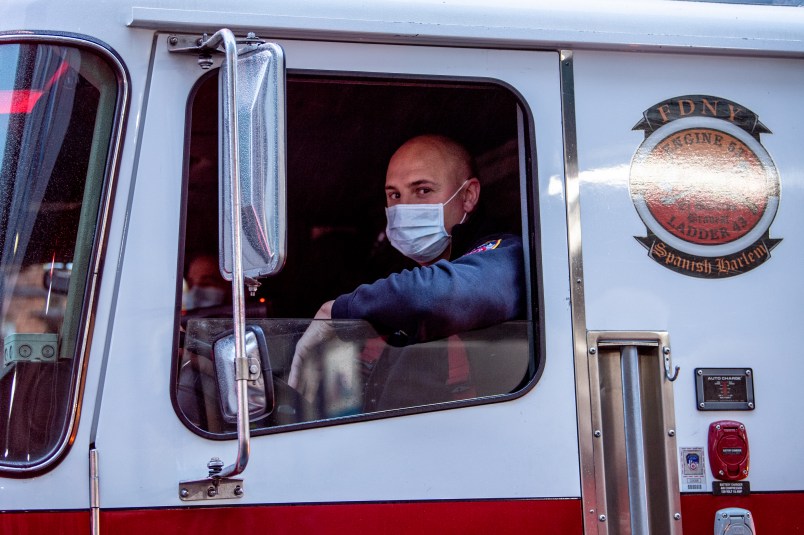New York Gov. Andrew Cuomo (D) on Monday noted an increase in New York City residents who tested positive for the presence of COVID-19 antibodies in recent days. According to state survey data that he described at a press conference, nearly a quarter of Big Apple residents showed signs of an immune response to the disease.
Crucially, the antibody test used by the state isn’t the same as other tests that show if someone is currently infected with the virus. Rather, the presence of antibodies reflects the past presence of the disease and subsequent immune response.
At a press conference last week, the governor said 21.2% of New York City residents tested had shown antibodies for the disease. On Monday, that number was up to 24.7%. New statewide results described by the governor on Monday showed a percentage point increase to 14.9%, but the governor said that was within the study’s margin of error.
Announcing the initial antibody survey results on Thursday last week, Cuomo said 3,000 adults had been tested outside of grocery stores and other big box stores around the state. On Monday, he said a total of 7,500 people had been tested.
Cuomo also described a jump between the two phases of the study among Hispanic and Latino New Yorkers.
While 22.5% of Hispanic/Latino New Yorkers had tested positive for COVID-19 antibodies as of April 22, when the governor had shared weighted survey results, 32% of the same demographic had tested positive by April 27, Cuomo said, a nearly 10 point jump.
“Nobody can explain what caused that jump,” Cuomo said, before noting that the state was expanding testing in lower-income, African American and Latino neighborhoods.
The number of black New Yorkers who tested positive for COVID-19 antibodies decreased five points between the two rounds of testing, from 21.1% to 16.9%, Cuomo said. Mortality data from the state shows that black and Hispanic New Yorkers have disproportionately died from COVID-19.
But key data are still missing: The state has not released the numbers behind the governor’s press briefing slide shows, which are based on preliminary results. A spokesperson for Cuomo told TPM Thursday that there was “no set timeline” to release more details of the survey.
The antibody tests, which use blood samples, have been received with some caution by public health authorities.
The World Health Organization, for example, said Friday that “Laboratory tests that detect antibodies to SARS-CoV-2 in people, including rapid immunodiagnostic tests, need further validation to determine their accuracy and reliability.”
The New York survey’s focus on grocery and big box stores may also skew numbers higher, by sampling people who are shopping in public rather than staying home.
Nonetheless, Cuomo asserted Monday that the tests provided “snapshots” of the disease’s presence in New York.
“Snapshot, snapshot, snapshot,” he said. “You look at the different pictures and you have a movie.”







I remind people that imagine Cynthia Nixon (actress) was Governor in NY now? This is why we can’t elect amateurs anymore for any elected position.
I would really like to know the percentage of false positives and false negatives for each type of antibody test in order to determine a statistical confidence level.
If you’re using these tests to return people to work, then false negatives are very bad.
A false positive indicates an exposure that may not have occurred, and since we don’t yet know about the likelihood of reinfection given the presence of antibodies, the indication of the presence of antibodies doesn’t do much good unless you’re just trying to estimate the number of allegedly infected people.
Not exactly the “gold standard” of statistical design. And, “snapshot”, snapshot! snapshot” and you have the disorganized box of photographs that grandma insists on hauling out and boring guests and the repair people with.
Consider the audience, hoarding toilet paper and swilling bleach. The simpler he explains things the better chance of being understood.